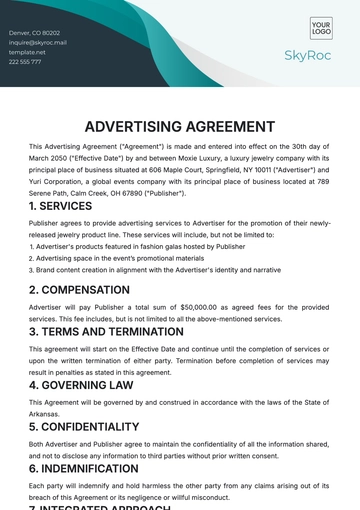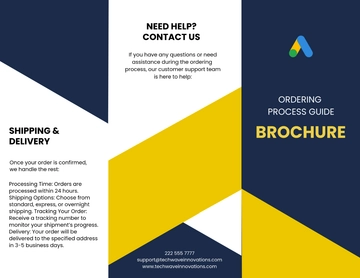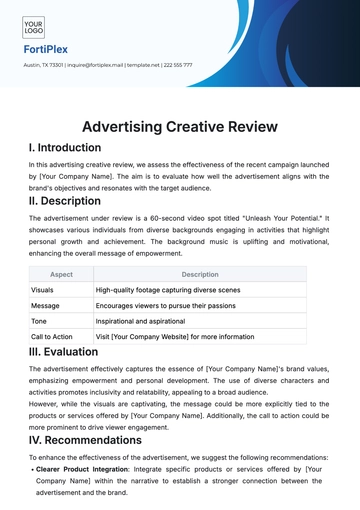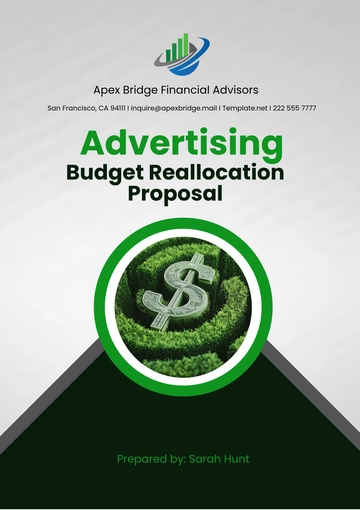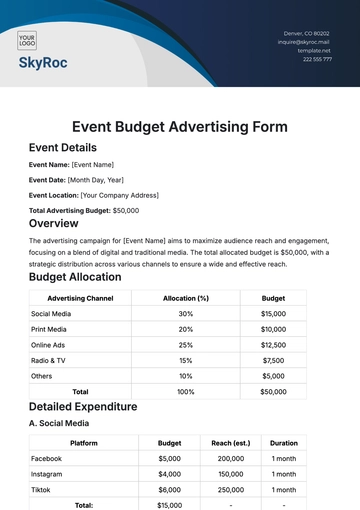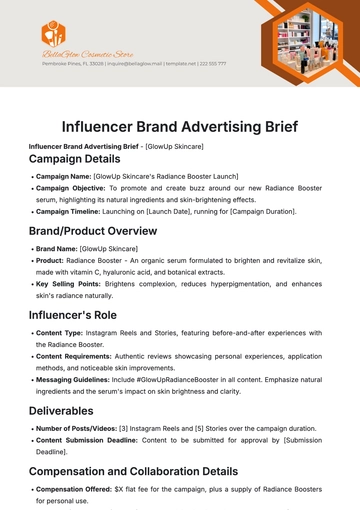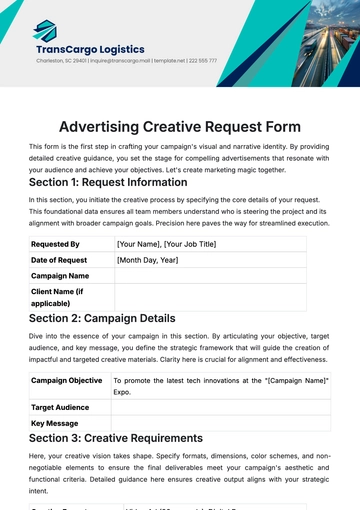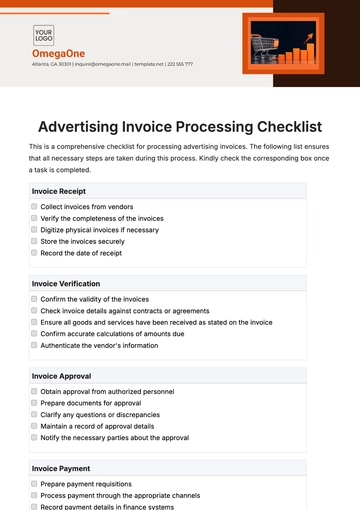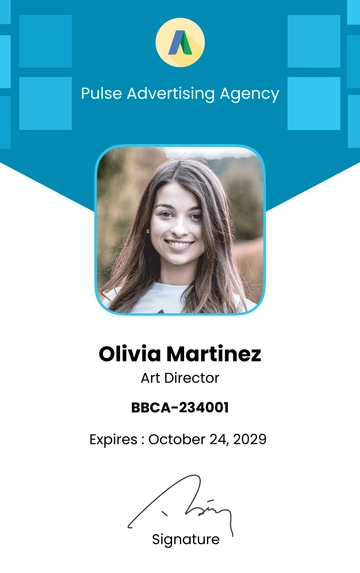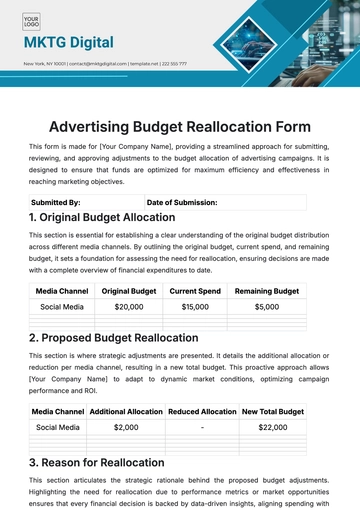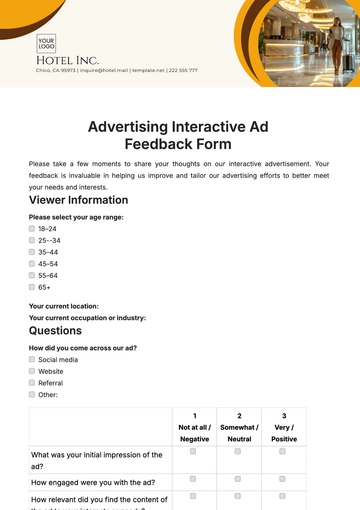Free Advertising Cost Management Strategy Document

1. Introduction
This Advertising Cost Management Strategy gives an overview of the strategic objectives that seamlessly align with the goals of [Your Company Name]. This section delves into the meticulous definition of these objectives, establishing a clear and purposeful connection between advertising efforts and the broader business aspirations.
Objective
Precisely articulate the primary objectives, elucidating the intended impact on brand positioning, market share, and customer engagement. This nuanced articulation serves as the foundation upon which all subsequent decisions and actions are meticulously calibrated.
Key Performance Indicators (KPIs) Alignment
Establish a direct correlation between the defined objectives and the selection of key performance indicators (KPIs). This alignment ensures that the metrics chosen for evaluation are not only quantifiable but also directly indicative of progress toward the meticulously outlined strategic objectives.
In combining these elements within this section, [Your Company Name] aims to imbue its Advertising Cost Management Strategy with a profound sense of purpose and strategic coherence, setting the stage for a nuanced and impactful approach to advertising resource allocation.
2. Budget Allocation Framework
This section details the allocation of the advertising budget, providing a nuanced breakdown that facilitates a granular understanding of financial allocations across diverse advertising channels and campaigns.
Channel Allocation
A detailed examination of budget allocations among various advertising channels, elucidating the rationale behind each allocation based on the channel's historical performance and its strategic alignment with organizational goals.
Campaign-Specific Allocations
This subsection delves into the specific allocation of resources for individual campaigns, emphasizing a strategic distribution that considers campaign objectives, target audiences, and anticipated outcomes. A table (see Table 2.1.2) provides a visual representation of campaign-specific budget allocations.
Table 2.1.2: Campaign-Specific Budget Allocations
Campaign Name | Objectives | Target Audience | Budget Allocation |
Campaign A | Increase brand awareness | Millennials | $50,000 |
Campaign B | |||
Campaign C |
This table serves as a dynamic tool for decision-makers, offering a clear overview of the financial distribution across campaigns, fostering transparency and informed decision-making.
Timeframe Considerations
An exploration of budget allocations concerning different timeframes, acknowledging the temporal dynamics of advertising effectiveness. This includes considerations for seasonal variations, promotional periods, and the optimal timing of budget releases.
3. Cost Monitoring and Analysis
Key Performance Indicators (KPIs)
In this section, meticulous attention is directed towards the establishment of a robust framework for Cost Monitoring and Analysis The primary focus is on the identification and interpretation of Key Performance Indicators (KPIs) that serve as vital metrics in assessing the efficacy and efficiency of advertising expenditures.
Selected KPIs
The table below delineates the selected KPIs, providing a concise overview of their definitions and significance in the context of our advertising initiatives:
KPI | Definition | Significance |
Cost Per Click (CPC) | The cost incurred for each click on an ad | Indicates the efficiency of ad spend in driving user engagement and interest |
Cost Per Acquisition (CPA) | The cost of acquiring a customer | Measures the cost-effectiveness of converting leads into customers, crucial for evaluating overall campaign success |
Return On Ad Spend (ROAS) | Revenue generated for every dollar spent on advertising | Evaluates the financial return on investment, guiding decisions on budget allocation and campaign optimization |
Real-Time Monitoring
Utilizing advanced analytics tools, real-time monitoring of the selected KPIs will be implemented. This dynamic approach ensures that any deviations from predefined benchmarks are promptly identified, allowing for agile decision-making and immediate adjustments to advertising strategies.
Data Visualization
To facilitate comprehensive understanding, the analysis results will be presented through visually intuitive data visualizations. Graphical representations and charts will provide stakeholders with clear insights, aiding in swift comprehension and strategic decision-making.
This approach to Cost Monitoring and Analysis underscores our commitment to data-driven decision-making, allowing [Your Company Name] to navigate the dynamic advertising landscape with precision and effectiveness.
4. Vendor and Platform Assessment
Vendor Selection Criteria
In the meticulous process of Vendor and Platform Assessment, [Your Company Name] employs a rigorous methodology to select advertising vendors and platforms that align seamlessly with strategic objectives. This section delineates the comprehensive criteria utilized for vendor evaluation, fostering informed decisions and optimal cost efficiency.
Vendor Evaluation Matrix
Utilizing a Vendor Evaluation Matrix, we assess potential vendors based on key criteria, including but not limited to:
Criteria | Weightage | Description |
Cost Structures | 25% | Evaluation of vendor pricing models and overall cost structures |
Historical Performance | 30% | Analysis of past performance metrics and success stories |
Audience Alignment | 20% | Alignment of vendor capabilities with the target audience |
Technological Capabilities | 15% | Assessment of technological tools and features provided |
Flexibility and Scalability | 10% | Evaluation of the vendor's adaptability and scalability |
Negotiation And Agreement
Following the assessment phase, [Your Company Name] engages in negotiations with selected vendors, leveraging the insights gained from the evaluation process. This negotiation aims to secure favorable terms and agreements, further optimizing the cost-effectiveness of advertising initiatives.
This strategic approach to Vendor and Platform Assessment, coupled with a data-driven evaluation matrix, positions [Your Company Name] to make informed decisions that result in optimal advertising outcomes and financial prudence.
5. Adherence To Regulatory Compliance
In this section, we delve into the legal and ethical considerations surrounding advertising costs. Beyond mere adherence to regulatory compliance, [Your Company Name] recognizes the paramount importance of upholding the highest standards of integrity and ethical conduct in its advertising practices.
Regulatory Framework
Navigate the complexities of advertising laws and industry regulations, providing a comprehensive overview of the legal landscape governing advertising costs. This includes but is not limited to transparency requirements, fair competition practices, and consumer protection laws.
Ethical Guidelines
Extend beyond the legal framework to outline a set of ethical guidelines that govern advertising practices. This encompasses honest and transparent communication with customers, respecting privacy rights, and fostering a corporate culture that values ethical conduct in all advertising endeavors.
Compliance Audits
Institute a systematic approach to conducting compliance audits, ensuring that advertising practices align with the evolving regulatory landscape. Regular audits serve as a proactive measure to identify and rectify any potential compliance issues, fostering a culture of accountability within the organization.
6. Continuous Optimization Strategies
Iterative Refinement Protocols
Employ a dynamic approach to optimization by instituting iterative refinement protocols within the advertising framework. This section focuses on the continual enhancement of strategies, incorporating A/B testing methodologies, in-depth performance analyses, and adaptive adjustments based on the ever-evolving dynamics of the market landscape. Emphasizing a proactive stance, these strategies aim to elevate the cost-effectiveness of advertising initiatives over time, ensuring a sustained and agile response to emerging trends and consumer behaviors.
7. Risk Mitigation Plans
Risk Identification And Mitigation Strategies
This section delves into a meticulous exploration of potential risks associated with advertising costs, employing a proactive approach to identify, assess, and mitigate potential challenges. By leveraging risk management strategies, [Your Company Name] aims to fortify its advertising cost management framework, ensuring resilience in the face of uncertainties.
Market Fluctuations
In-depth analysis and proactive measures to address market fluctuations that could impact advertising costs. Strategies include budget adjustments and contingency plans to navigate volatile market conditions.
Platform Policy Changes
Anticipation of changes in advertising platform policies and the establishment of adaptive strategies to swiftly align with evolving guidelines. Ensuring continuous compliance with platform regulations to mitigate unforeseen disruptions.
Consumer Behavior Shifts
Identification and response plans for shifts in consumer behavior that may influence advertising costs. Strategies include agile adjustments to campaign targeting and messaging to align with evolving consumer preferences.
Through the comprehensive exploration and mitigation of these identified risks, [Your Company Name] aims to establish a robust foundation for resilient advertising cost management, fostering adaptability and strategic agility in the industry.
8. Documentation Of Processes and Protocols
Standard Operating Procedures (SOPs) Development
In this section, we delve into the creation of Standard Operating Procedures (SOPs) that comprehensively document the intricacies of processes and protocols governing advertising cost management. These SOPs serve as the cornerstone for consistent and well-informed decision-making. Each procedure is meticulously outlined, providing a detailed roadmap for stakeholders to navigate through the complexities of our advertising cost management strategy. By articulating these processes with precision, [Your Company Name] ensures transparency, fosters accountability, and establishes a robust foundation for strategic implementation.
9. Periodic Reporting Mechanisms
Reporting Framework
Establish a robust reporting framework to convey key outcomes derived from the advertising cost management strategy. This section encompasses regular and structured reports, providing stakeholders with comprehensive insights into budget adherence, performance metrics, and analytical findings. The reporting framework serves as a crucial tool for informed decision-making, enabling a proactive approach to adapting strategies based on real-time data and market dynamics. The structured reports act as a navigational compass, guiding [Your Company Name] towards continuous improvement and strategic refinement in the dynamic landscape of advertising cost management.
10. Feedback Mechanism And Continuous Improvement
Stakeholder Feedback And Iterative Enhancement
Establish a robust Feedback Mechanism to systematically gather insights from stakeholders regarding the advertising cost management strategy. This section emphasizes the importance of continuous improvement through a cycle of feedback collection, analysis, and iterative enhancement. By fostering a culture of adaptability and responsiveness to stakeholder input, [Your Company Name] aims to refine and optimize the advertising cost management strategy in an ongoing and dynamic manner.
11. Conclusion
This Advertising Cost Management Strategy provides a framework for optimizing advertising expenditures while achieving our strategic goals. Through diligent monitoring, continuous improvement, and adherence to ethical standards, this strategy is designed to ensure the most effective use of our advertising budget, aligning with our broader business objectives. Regular reviews and updates are essential to maintain its relevance and effectiveness in the years to come.
- 100% Customizable, free editor
- Access 1 Million+ Templates, photo’s & graphics
- Download or share as a template
- Click and replace photos, graphics, text, backgrounds
- Resize, crop, AI write & more
- Access advanced editor
Harness marketing efficiency with Template.net's Advertising Cost Management Strategy Document Template. A customizable, fully editable template designed to ensure effective cost control in your advertising endeavors. Made editable in our Ai Editor Tool, it aids in outlining a realistic and profitable advertising plan. Its innovative format and professional layout provide the perfect blueprint for success, effectively enticing even the most seasoned marketing experts.

